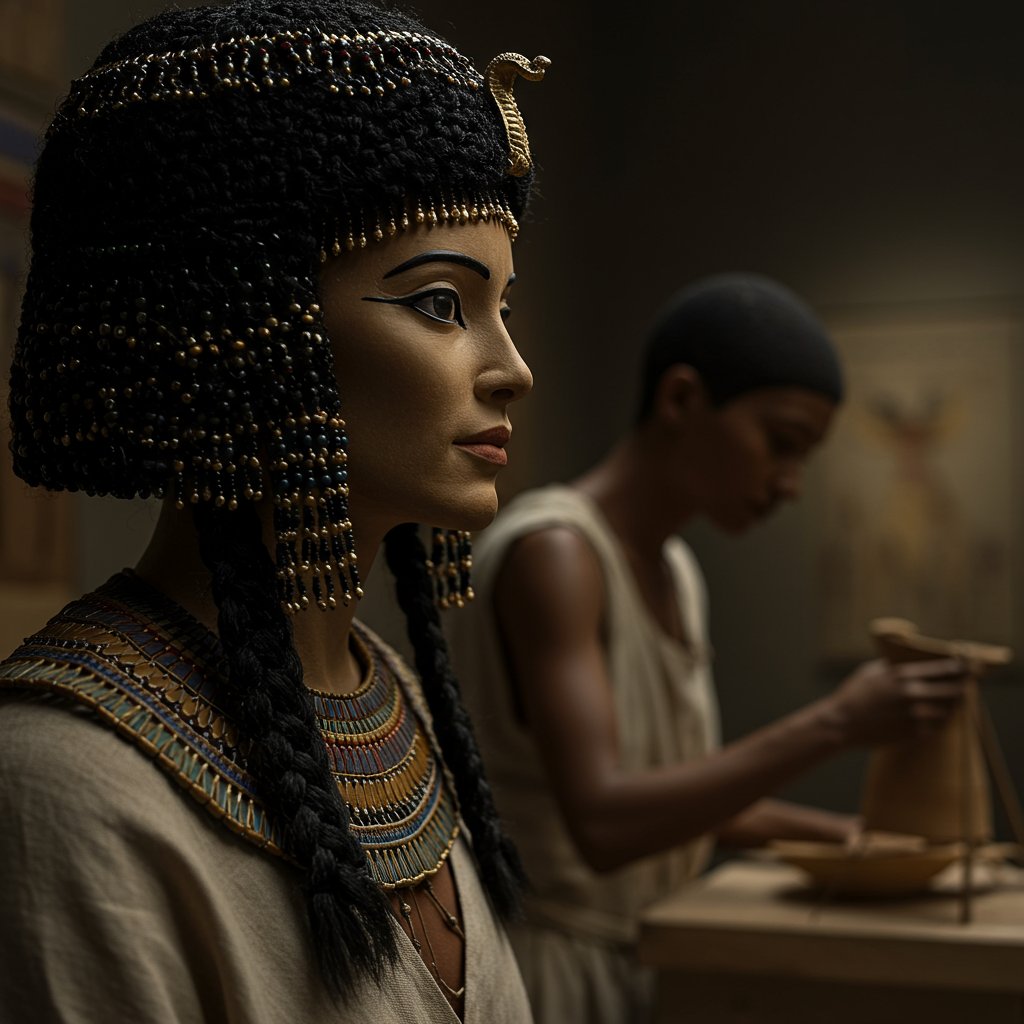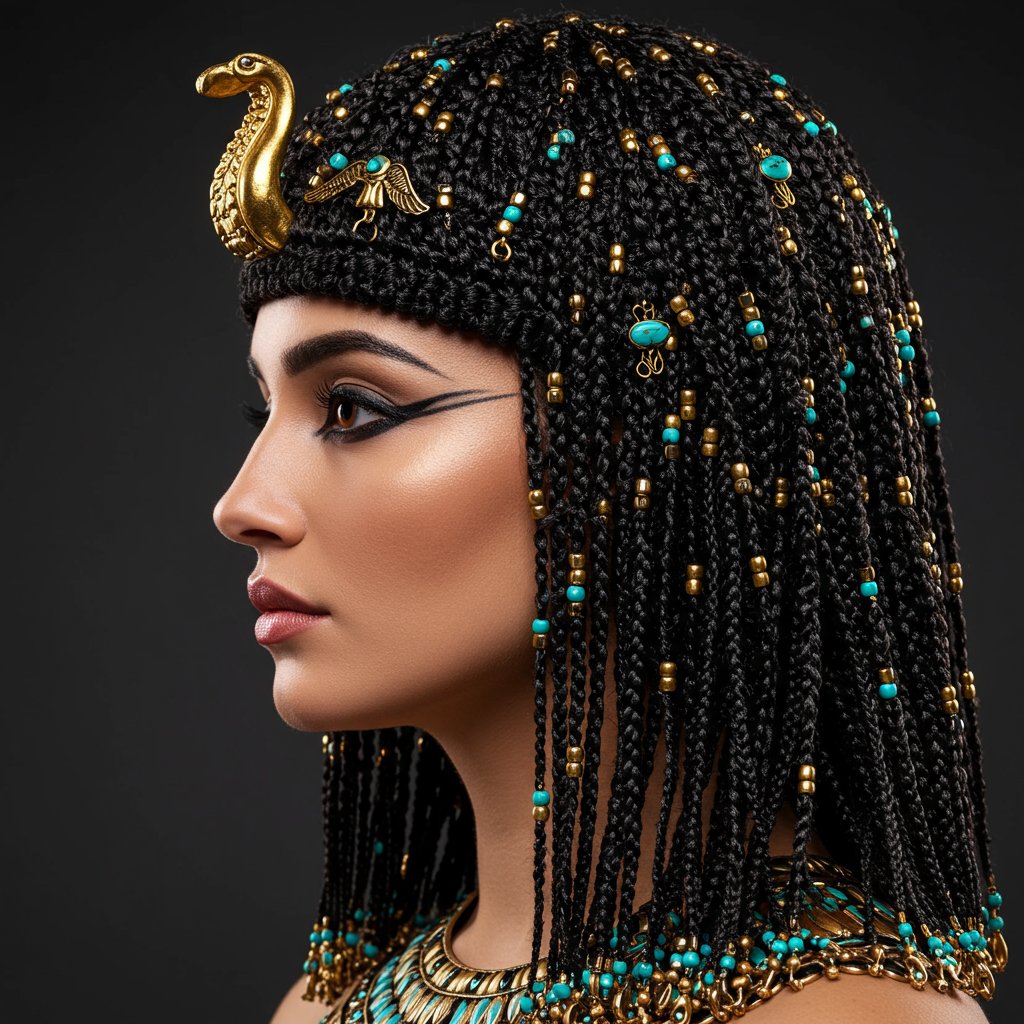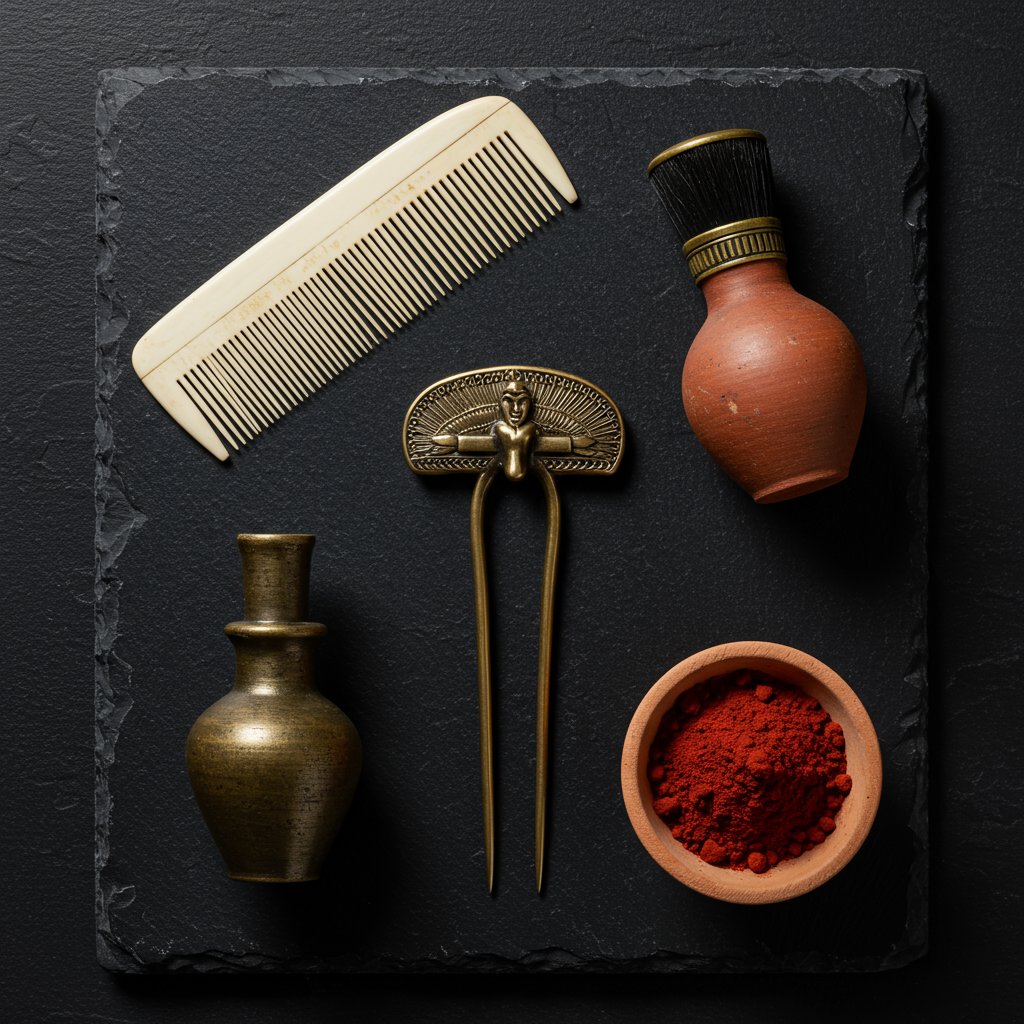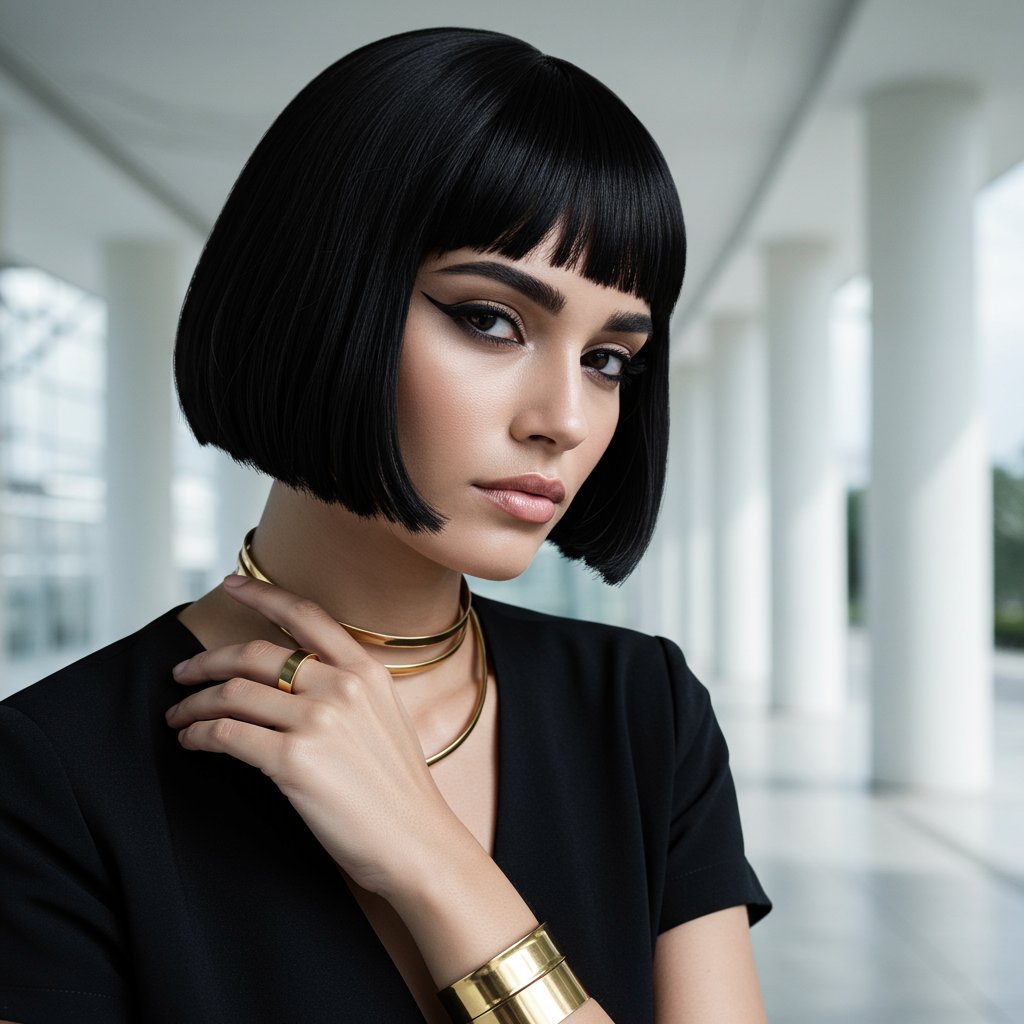The Hairstyles of Ancient Egypt: Decoding the Meanings Behind Ancient Styles | A Deep Dive
More Than Adornment: An Introduction to Ancient Egyptian Hairstyles
In the grand tapestry of human history, hair has always been more than just a biological feature; it is a canvas for self-expression, a marker of identity, and a symbol of cultural values. Nowhere is this more evident than in the sophisticated civilization of Ancient Egypt. Far from simple matters of vanity, the hairstyles of Ancient Egypt were a complex and eloquent language, communicating a person's age, social status, role in society, and even their connection to the divine. From the shaved heads of pious priests to the elaborate, beaded wigs of the nobility, every strand told a story. Understanding these ancient styles offers a unique window into the daily lives, beliefs, and social structures of a culture that has captivated the world for millennia.

This deep dive will explore the rich symbolism woven into the hairstyles of Ancient Egypt. We will journey back in time to uncover why wigs became the ultimate status symbol, what the iconic 'sidelock of youth' represented, and how pharaohs and gods used their hair (or lack thereof) to project power and divinity. We will also examine their advanced hair care rituals and the beautiful adornments that completed their looks. The legacy of these ancient trends is surprisingly resilient, with echoes visible in the modern styles we see on runways and in salons today. By decoding these ancient hair traditions, we gain a deeper appreciation for the timeless power of hairstyling as a fundamental form of human expression.
Hair and Social Hierarchy in Ancient Egypt
In the rigid social structure of Ancient Egypt, your hairstyle was an immediate and visible indicator of your place in the world. It was a form of visual communication that transcended words, instantly signaling rank, occupation, and wealth. At the bottom of the social ladder, laborers, servants, and farmers often kept their hair short or shaved their heads completely. This was not just a matter of style but of practicality. In the blistering Egyptian heat, a shaved head was cooler and, more importantly, a crucial defense against the pervasive problem of lice and other pests. For these individuals, hair was a matter of hygiene and comfort rather than elaborate expression.

Conversely, the elite class used hair to display their elevated status and detachment from manual labor. Nobles, officials, and wealthy landowners sported elaborate and meticulously maintained hairstyles, often in the form of expensive wigs. The complexity, material, and decoration of a wig were direct reflections of the owner's wealth and influence. Priests and priestesses held a unique position; they typically shaved their entire bodies, including their heads, as a symbol of purity and devotion to the gods. This act, known as uab, was a ritualistic cleansing, signifying their renunciation of the worldly in favor of the divine. This stark contrast between the ornate wigs of the aristocracy and the bald heads of the clergy powerfully illustrates how hair, or its absence, was central to defining one's role and identity within Egyptian society.
The Intricate World of Egyptian Wigs
While natural hair was important, the wig was the quintessential element of elite Egyptian hairstyling for both men and women. The prevalence of wigs can be attributed to several factors: hygiene, protection, and unparalleled status. By keeping their natural hair cropped short or shaved, Egyptians could avoid lice infestations while still presenting a fashionable and elaborate appearance. Wigs also offered protection from the harsh Egyptian sun, acting as a stylish and functional head covering. More than anything, however, a wig was a potent symbol of wealth and social standing. The finest wigs were crafted from 100% human hair, which was expensive and highly sought after. These were painstakingly assembled by skilled artisans who wove, braided, and curled the hair into stunningly complex designs.

Less affluent individuals who still wished to emulate the styles of the elite would use wigs made from more accessible materials, such as sheep's wool or plant fibers like palm leaf. These materials were often blended with some human hair to create a more affordable but still fashionable accessory. The styles varied dramatically over the different periods of Egyptian history. During the Old Kingdom, short, bob-like wigs were popular. By the New Kingdom, tastes had shifted to longer, more voluminous styles with intricate layers of braids, twists, and curls. These wigs were often dyed black using vegetable dyes, though some were colored with henna to achieve reddish tones. To hold their shape, they were coated in a mixture of beeswax and resin, and further embellished with gold rings, turquoise beads, and ornate hairpins, transforming them from mere accessories into true works of art.
The Sidelock of Youth: A Symbol of Childhood
Among the most distinctive and symbolic hairstyles of Ancient Egypt was the 'sidelock of youth,' also known as the Lock of Horus. This style was exclusively worn by children, both boys and girls, from infancy until they reached puberty. To create the look, a child's entire head was shaved, leaving only a single, thick lock of hair to grow on the right side of the head. This lock was often braided and sometimes ended in a curl or was adorned with a clasp or beads. The style was not merely a fashion choice but a deeply significant cultural and religious practice. It visually set children apart from adults, clearly marking them as being in a protected, pre-adult phase of life.

The symbolism of the sidelock was tied to the mythology of the god Horus. According to myth, Horus's father, Osiris, was murdered by his brother Set. As a child, Horus wore the sidelock, and it was only after he avenged his father and claimed his rightful throne that he cut it off, signifying his transition to adulthood and kingship. Egyptian children, therefore, wore the sidelock as an homage to the young god, and it was believed to offer them divine protection during their vulnerable early years. The end of childhood was marked by a 'cutting of the lock' ceremony, a significant rite of passage. For boys, this often coincided with their entry into apprenticeship or formal schooling, while for girls, it signaled their readiness for marriage. This powerful ritual marked their official entry into adult society, leaving behind the protected status of their youth.
Crowns of Hair: Styles of Pharaohs and Gods
The hairstyles associated with royalty and divinity were designed to convey immense power, authority, and a direct connection to the gods. The pharaoh, considered a living god on Earth, had the most iconic and symbolic headwear. Perhaps the most famous is the Nemes headdress, a striped linen cloth covering that draped over the shoulders and was tied at the back. While not hair itself, it completely covered the pharaoh's hair and, combined with other royal regalia, created an unmistakable silhouette of power, famously depicted on the funerary mask of Tutankhamun. Another royal symbol was the false beard, or postiche. This stylized, braided beard was attached by a strap and worn by pharaohs during ceremonies. Its purpose was to associate the ruler with the god Osiris, who was always depicted with a divine beard. Intriguingly, female pharaohs like Hatshepsut also wore the false beard to uphold the traditional iconography of kingship.

Depictions of the gods and goddesses themselves also featured highly symbolic hairstyles. Goddesses like Isis and Hathor were often shown with long, smooth black hair, sometimes topped with their specific divine emblems, such as Hathor's cow horns and sun disk. The hair of the gods represented their eternal nature and power. For the pharaoh, emulating these divine styles was a way to reinforce their god-like status. Beyond the Nemes, pharaohs wore various crowns for different occasions, such as the Khepresh, or 'blue crown,' worn in battle. These pieces of regalia, combined with the underlying shaved head or short hair, created an image of a ruler who was both pure in the priestly sense and divinely appointed to rule over the mortal realm.
Ancient Egyptian Hair Care: Rituals and Tools
The ancient Egyptians placed a high value on personal grooming and cleanliness, and their hair care routines were remarkably sophisticated. Archaeological discoveries have unearthed a variety of well-preserved tools that provide insight into their daily rituals. Combs, carved from wood or bone and sometimes ivory for the wealthy, were common. These often featured two sets of teeth: one side with wide teeth for detangling and the other with fine teeth for removing dirt and lice. Ornate hairpins, made of bronze, ivory, or silver, were used to secure complex hairstyles and wigs in place. For men, razors made from sharpened bronze or flint were essential for shaving their faces and heads.

Beyond tools, Egyptians developed a range of treatments to nourish and style their hair. They understood the importance of moisture and used various oils and animal fats as conditioners to combat the dry desert climate. Castor oil and almond oil were particularly popular for promoting hair growth and adding shine. These emollients were also used as a base for scented pomades, created by infusing the fats with fragrances from flowers like lotus or herbs like rosemary. For color, henna was widely used to dye hair and wigs a reddish-brown hue, not only for aesthetic reasons but also because it was believed to have conditioning properties. These meticulous care routines demonstrate that for the Egyptians, maintaining healthy and beautifully styled hair was an integral part of their concept of hygiene, beauty, and overall well-being.
The Language of Braids and Adornments
Braiding was a cornerstone of Egyptian hairstyling, a versatile technique used on both natural hair and wigs to create intricate and meaningful patterns. From simple three-strand plaits to complex, layered arrangements, braids were everywhere. They were practical, keeping hair neat and away from the face, but also highly decorative. Tomb paintings and sculptures show a vast array of braided styles, often worn in symmetrical arrangements or cascading down the back. The thickness, length, and pattern of the braids could signify different things, and they formed a key part of the visual language of hair in the culture.

What truly elevated these styles was the art of adornment. The Egyptians were masters of accessorizing, and they wove a stunning variety of objects into their braids and wigs. Small beads made of clay, faience (a type of glazed ceramic), or semi-precious stones like carnelian and turquoise added touches of color. Wealthier individuals used rings and tubes made of gold and silver to bind sections of their hair or the ends of their braids. These adornments were not just decorative; they could also be symbolic. Amulets, such as the Ankh (symbol of life) or the Scarab beetle (symbol of rebirth), were often incorporated into hairstyles to provide magical protection for the wearer. This fusion of skilled braiding and meaningful decoration turned every hairstyle into a personal statement of beauty, status, and spiritual belief.
Modern Inspiration from Ancient Egyptian Hairstyles
The aesthetic power of Ancient Egyptian hairstyles continues to resonate thousands of years later, offering a treasure trove of inspiration for contemporary looks. The key to incorporating this ancient elegance is to adapt its core elements for the modern world. One of the most enduring styles is the sharp, blunt bob with heavy bangs, famously associated with Cleopatra. This geometric cut remains a symbol of power and sophistication. Modern interpretations can be seen in sleek glass-hair bobs or texturized, edgier versions. A professional stylist can tailor the length and angle of the bob to perfectly suit your face shape, creating a look that is both timeless and strikingly modern.

Braids and adornments are another element that translates beautifully into today's fashion. The intricate braiding seen in Egyptian wigs can inspire modern protective styles, from micro-braids to elaborate cornrow designs. The art of hair jewelry is also making a major comeback. Incorporating gold or silver cuffs, rings, and fine chains into braids or updos is a direct nod to Egyptian adornment. It’s a sophisticated way to elevate a simple style into something special. Finally, the Egyptian focus on hair health using natural oils is a practice worth emulating. Using high-quality, natural-oil-based products for conditioning treatments can help maintain lustrous, healthy hair, proving that some beauty secrets are truly timeless. Consulting with an experienced stylist can help you explore how these ancient motifs can be reimagined into a unique and personal style that honors history while being perfectly suited for today.
Frequently Asked Questions About Ancient Egyptian Hair
Why did so many Ancient Egyptians shave their heads?
Many Egyptians, particularly priests and laborers, shaved their heads for reasons of both piety and practicality. Priests shaved their entire bodies as a ritual of purity to serve the gods. For the general population, a shaved head was a highly effective way to prevent lice infestations, a common problem in the hot climate. It also provided relief from the heat. The elite often shaved their heads as well, but they would cover them with elaborate wigs in public.What were Egyptian wigs made of?
The materials varied based on social status. The most expensive and desirable wigs were made from 100% human hair. For those who could not afford this luxury, wigs were crafted from more accessible materials like sheep's wool or plant fibers, such as palm leaf fibers. These materials were often blended and coated with beeswax and resin to be styled and shaped.What did the sidelock of youth signify?
The sidelock of youth, or Lock of Horus, was a hairstyle worn exclusively by children. It consisted of a single, long lock of braided hair on an otherwise shaved head. It symbolized the wearer's status as a child and was believed to place them under the divine protection of the god Horus. The lock was ceremonially cut off when the child reached puberty, marking their transition into adulthood.Did men and women wear similar hairstyles?
Yes, to a large extent. In many periods, men and women of the elite class wore very similar wig styles. Both genders favored long, braided wigs, as well as shorter, bob-like styles. The primary differences were often in the specific adornments used or in the context of royal and religious regalia, where styles were strictly defined by role.How did Ancient Egyptians color their hair?
The most common hair dye used in Ancient Egypt was henna, a plant-based dye that imparted a reddish-brown color. It was used on both natural hair and wigs. Henna was valued not only for its color but also for its perceived conditioning properties. While black was the most common wig color, this was typically the natural color of the hair used or was achieved with vegetable-based pigments.Was Cleopatra's iconic bob hairstyle historically accurate?
The popular image of Cleopatra with a sharp, black bob and heavy fringe is largely a 20th-century creation, popularized by films like the 1963 classic starring Elizabeth Taylor. While women in earlier Egyptian periods did wear bob-like wigs, Cleopatra lived during the Ptolemaic period, which was heavily influenced by Greek and Roman culture. It is more likely she would have worn her hair in a coiled bun or a braided style popular in the Hellenistic world, though she may have used Egyptian iconography for political purposes.Legacy of the Nile: The Enduring Influence of Egyptian Hair
The hairstyles of Ancient Egypt offer a profound lesson in the power of hair as a cultural artifact. They were far more than fleeting trends; they were a sophisticated visual language, rich with symbolism and integral to the social and spiritual fabric of the time. From the child's protective sidelock to the pharaoh's divine false beard, each style was a deliberate statement of identity, status, and belief. The meticulous care, intricate braiding, and stunning adornments reveal a deep appreciation for beauty and a mastery of a craft that has influenced hairstyling for centuries.
This ancient civilization's legacy lives on, not just in museum artifacts, but in the very styles we embrace today. The geometric precision of the bob, the artistry of intricate braids, and the elegance of hair jewelry all have roots that stretch back to the banks of the Nile. By studying the hairstyles of Ancient Egypt, we are reminded that our choices about our hair are part of a long and fascinating human story. It is a timeless narrative of using what grows from our heads to tell the world who we are, where we come from, and who we aspire to be.


